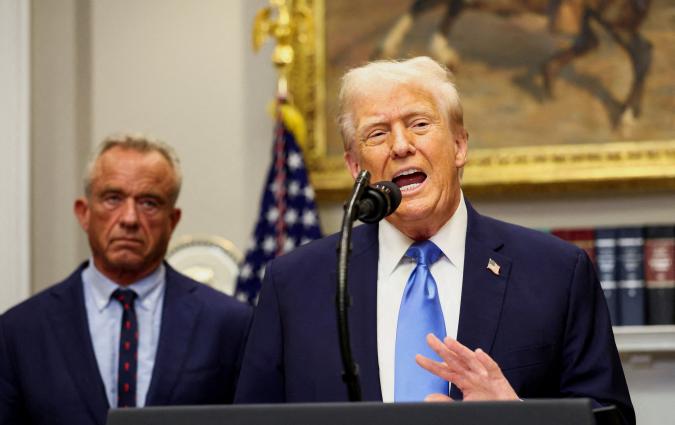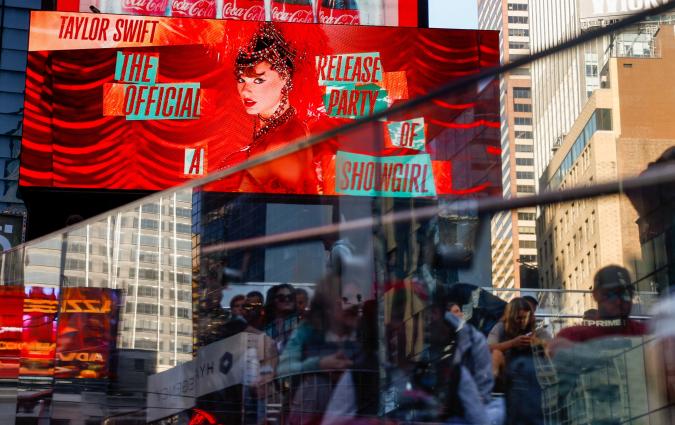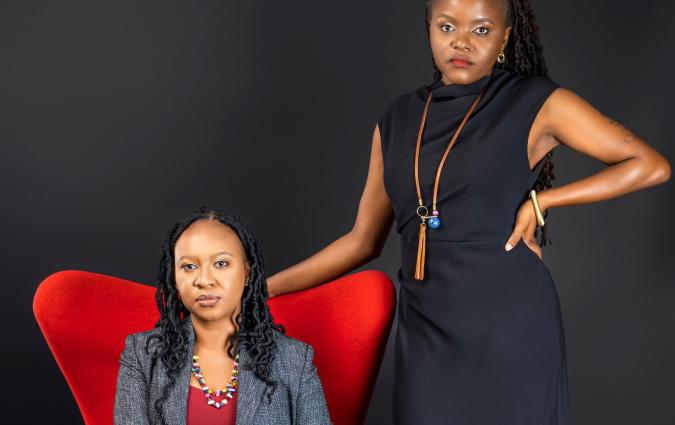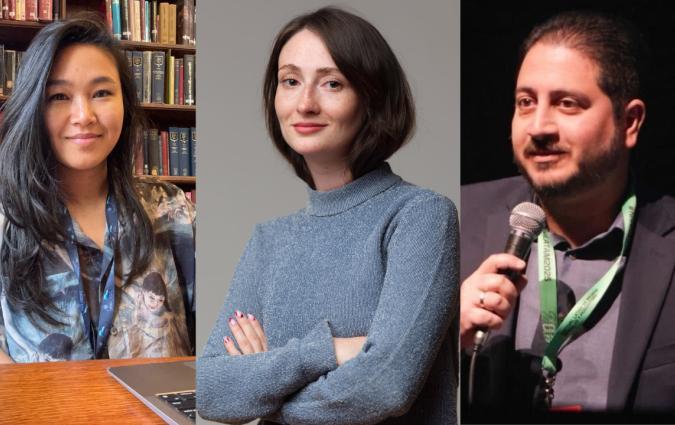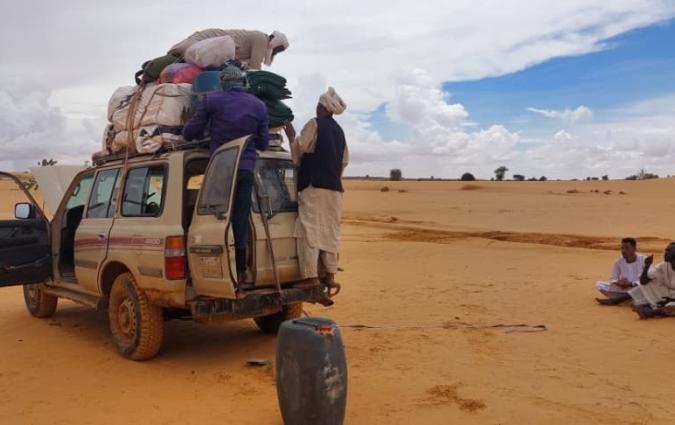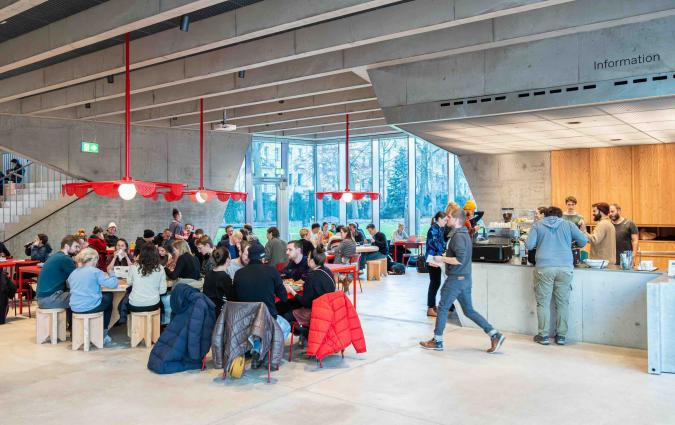A media startup is helping local journalists use VR and AR to cover the war in Syria

“Last winter, I swear we burned our clothes to stay warm.” Saddam Hussein al-Gasi’s voice cuts through a shot of the tent village outside Aleppo where he lives. As a 360º video, the viewer can change what they see with the turn of a smartphone to explore the canvas streets of Jop Kass that house some of Syria’s 6.7 million internally displaced people. The story is just one example of how Frontline in Focus, an independent media agency co-founded by award-winning photographer Khalil Ashawi, is experimenting with storytelling from conflict zones.
Ashawi started reporting from Syria, where he filed photos for news outlets and agencies including Reuters in 2013. Five years later, he launched Frontline in Focus with colleagues, first as a Facebook page to showcase his work and then as a greater range of stories from the country. Today Frontline in Focus produces films and photojournalism from Syria and is expanding into virtual reality (VR) and augmented reality (AR) storytelling, including for media clients such as Dutch broadcaster NOS and Swiss outlet SRF.
The agency works with (and helps train) local journalists inside Syria, the country where most of its team is based. From Syria and Switzerland, Frontline’s cofounder Khalil Ashawi and product thinker Hail Khalaf discussed with me how the agency is investing in immersive ways to tell human stories of conflict and crisis.
Q. Your reporting is focusing predominantly on Syria but you work with partners in Yemen and have produced stories from Libya too. What stories does Frontline tell?
K.A.: Since the beginning of the war in Syria until 2017-18, all news [organisations] talked about was fighting and how it was going on the ground. Most of them were not talking about what was happening to people who had fled their homes. We cover some stories from the military side, but we are focused on human interest stories. In the last two years, we have focused on a specific person with something to tell because the media want this kind of [character-led] story too.
H.K.: At the beginning of the war, there was movement within the conflict and news agencies were interested in these stories. Now it’s been 11 years and it’s a protracted crisis. You have people who’ve been living in tents for 10 years. We try to focus on that human side which is often neglected. That includes our story on the man who founded a cat sanctuary for strays and a report of the man who can see his house from the camp because it’s on the frontline but can’t go there. War isn’t only the fight and conflict.
People liked the concept of citizen journalists at the beginning of the conflict. Agencies and embassies gave people equipment to take pictures and send them. However, no one gave them training, even though this was the only source for the outside world to see what was happening inside Syria. It worked for some, but there are others who need attention and mentorship. We have to build capacity for the people who consider themselves journalists but sometimes need that professional training.
Q. How does VR and AR storytelling help tell these stories?
K.A.: The production of media stories using VR and AR technology is a new and revolutionary approach in media production that helps viewers move out of the traditional display of news stories and become immersed in the experience. Have you imagined yourself walking on a destroyed street in a conflict zone? This is something we offer.
H.K.: You can show a lot more in one VR or AR story than in a normal video. The viewer experiences a lot more and puts themselves in the subject’s shoes. AR is mind-blowing technology: you can have a person in your kitchen or in your living room and tell you the story of how his family died in a chemical attack.
K.A.: We produced a VR livestream to tell the story of a Syrian refugee camp with journalists able to talk to anyone in the camp with live translation. We also produced a story for Dutch TV using this livestream. We are currently working to develop the AR project, focusing on children's stories in conflict and war zones. The project is expected to produce over 30 stories using AR technology.
Q. What equipment is required?
H.K.: The equipment and editing are expensive: some 360º cameras cost $800 and this doesn’t include microphones and cables. Some 8K cameras cost $4,500, so we are trying to partner with a manufacturer. Stories can also take a long time and a lot of resources. There were five people on call to provide live translation for the VR livestream.
K.A.: Editing for VR and AR is hard. For AR, you need a scanner to scan the object you want to display. Objects often come out with formal defects, especially for moving objects such as human beings or animals. We then export them to processing software and process them bit-by-bit until we get the best possible shape. We then reduce the object’s size, since objects come out in large sizes that cannot be displayed online if the internet connection is poor. The last stage includes linking these objects to our material for the press using software applications and display interfaces designed specifically to display AR models.
Another problem in Syria is the internet: outside of homes and offices we don’t have internet connection, so we have satellite internet that moves with us.
Q. What are the challenges for reporters, audiences, and newsrooms?
K.A.: Because we are reporting from Syria, safety is a concern. We provide our staff with helmets, flak jackets and safety training. We use a 360º live stream to track where our correspondents are: if connection is lost, there may be an issue.
H.K.: From the security side, we always do a thorough assessment before we send somebody somewhere. Also, while citizen journalists often have good connections with the community, you must explain to the community why you are taking these pictures.
K.A.: Technologically advanced countries do not face challenges in watching such stories, with their high speed and excellent internet infrastructure, and the availability of various types of VR headsets. Viewers in countries with poorer technology and internet connection can watch stories using their mobile phones. We also seek to reduce the size of our stories to make them accessible and available for everyone, no matter how poor the internet connection is.
H.K.: I think these technologies are the future. It’s going to happen whether we like it or not – and we like it. It’s good to be one step ahead of the game.
Laura Oliver is a freelance journalist based in the UK. She has written for the 'Guardian', BBC, 'The Week' and more. She is a visiting lecturer in online journalism at City, University of London, and works as an audience strategy consultant for newsrooms. You can find her work here.
In every email we send you'll find original reporting, evidence-based insights, online seminars and readings curated from 100s of sources - all in 5 minutes.
- Twice a week
- More than 20,000 people receive it
- Unsubscribe any time


